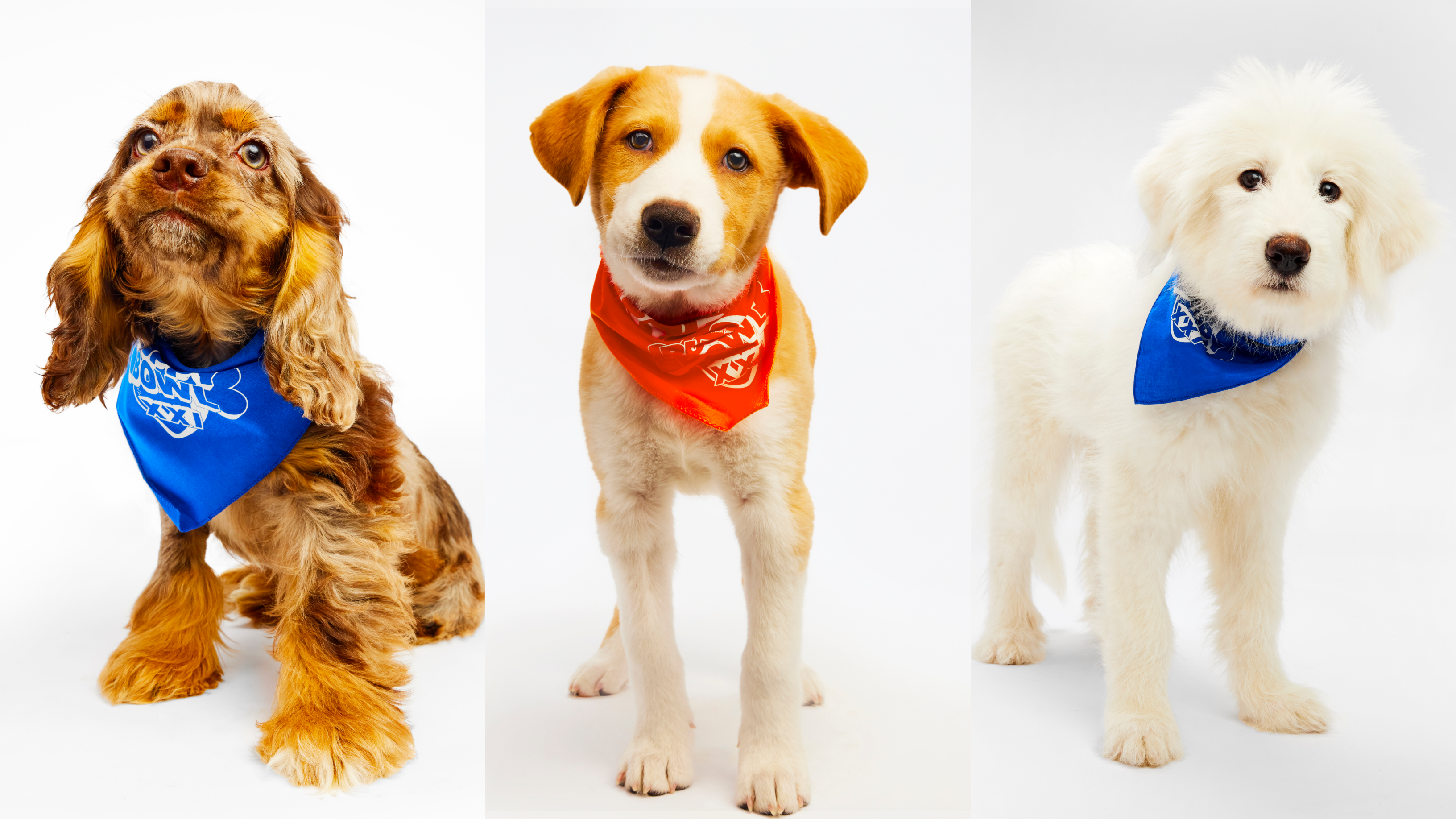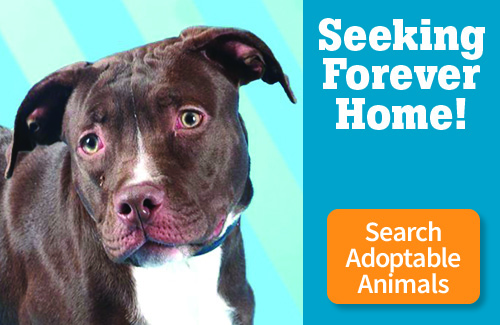My dog chases animals, joggers, bicyclists, skateboarders – anything that moves – and I am worried he will get hurt. What can I do?
Chasing and running after prey, nipping at heels and herding are normal dog behaviors. These behaviors are more strongly motivated in some breeds of dogs than others. In addition, some dogs may be motivated to chase off intruders (people, other dogs) from their property and, when the intruders leave, the behavior may appear to the dog to have been successful.
This can result in an increase in the “chase” behaviors. In order to control chase behaviors, it is necessary to train the dog to do something different than it was doing before. It is not enough to yell “no” and punish the dog. This alone will not stop a behavior that has a strong motivation. Even if you find a punishment that is strong enough to stop the chase, it is likely to INCREASE the dog’s anxiety or fear about the “stimulus.”
First, let’s look at prevention of chasing behaviors. Once you have witnessed your dog engaging in an inappropriate chase, its time to start training. Get a leash on the dog and teach it to sit and stay. Then present the dog with something that it would normally chase and reward the dog for maintaining the sit or stay. Remember, when off the leash the dog may revert to its old habits; therefore, your dog must always be leashed when outdoors. It also would be helpful to avoid those situations until you feel confident that the dog will behave.
Once the dog has been engaging in chase behaviors for some time, it will be more difficult to stop the behavior. The very fact that the object of chasing is a running target is usually reinforcement (or stimulation) enough. A program of response substitution is necessary to teach the dog the desired and acceptable response when exposed to the stimulus. If there is fear or anxiety when exposed to the stimulus, desensitization and counter-conditioning is needed to change the dog’s attitude and emotions to ones that are positive. This is usually best done with the help of a qualified trainer.
How do I get started?
There are three things you need to be able to do with your dog before you can begin a more structured training program. First, your dog should walk well on a leash and obey simple commands such as sit, down and stay. Second, it is useful to get your dog to focus on you with a verbal command such as “watch me” which is designed to get your dog to look at you and which will help give you control. Third, you should have a verbal phrase that tells the dog you are leaving the situation.
Teaching Look, Watch Me or Focus
1. Show your dog a favored toy or treat and then hide it behind your back. On the first attempt it would be acceptable to show the dog the toy or treat.
2. Say look, watch me or focus and as soon as your dog stops its attempt to get the treat and makes eye contact, use your reward or clicker and treat. Repeat to improve consistency and immediacy.
3. Gradually increase the amount of time you require eye contact to last and then start adding distractions in the background, like people playing or a refrigerator door opening, etc. Your dog ONLY gets rewarded after maintaining (e.g. not breaking) eye contact with you. The goal is for your dog to maintain eye contact on cue with the key phrase for several minutes, regardless of the amount of distraction and background activity.
4. Progress gradually to longer duration and increased relaxation before rewards are given.
Teaching Steady / Maintaining a Loose Leash (Note that this exercise can be done with either a head halter or a flat collar)
• While you are standing still in a location without distractions, give the dog three to four feet of the leash. If the leash remains loose, say “steady,” and occasionally give the dog a food or social reward (positive reinforcement).
• If the dog starts to walk away, the “steady” command is given. If the dog remains at loose leash, then reward. If the dog gets to the end of the leash and starts to tug and pull against the leash, a “steady” command is given and is immediately followed by a slight tug on the leash by the owner to get the dog’s attention and stop it. Then, slack is returned to the leash.
• Upon compliance (loose leash) immediately give a food or social reward.
• After several repetitions, the dog learns that it is rewarded for keeping the leash loose and the word steady means “move to a relaxed leash position.”
• Practice a couple of times a day in the home and yard with few distractions. As the dog gets better, gradually add distractions. Rewards should be given for maintaining a loose leash when walking by your side.
• The steady command can then be used to stop tugging and pulling on leash while walking and to achieve a settled and controlled heel.
Teaching “Let’s Go”
1. The goal of this exercise is to teach the dog to turn 180 degrees and go in the opposite direction.
2. Have the dog at your side wearing a leash and collar or head halter and have food treats available.
3. Begin to walk forward 10-12 steps.
4. Take a food reward, place it in front of the dog’s nose and say, “lets go” and quickly turn and back away using the food reward to get the dog to follow you around.
5. Once the dog follows, you turn and begin to walk forward in the opposite direction bringing the dog with you.
6. After a few steps do it again.
7. Once the dog learns “let’s go” is the signal to leave and go the other way you can practice in locations with more distractions.
How do I progress once I have better control?
The next step is called response substitution. Treatment by response substitution involves teaching the dog to ‘sit’ and ‘stay’ for rewards and then gradually introducing the stimuli (people, pet, things) that the dog chases. The goal is to make the rewards more desirable than the chasing. This will require that you identify highly valued rewards for your dog. These are usually consumables, food that the dog really wants, most likely table food. This reward will only be used for training and not available to the dog any other time. Once the dog can sit and stay calmly and quietly for the food reward you can progress to the next step. Control with a head halter and leash often is the most practical and most successful at ensuring that the dog will ‘sit’ and ‘stay’ in the presence of the stimulus. The use of highly motivating rewards (favored food treats, favored toys) can also be used to lure the dog into a ‘sit’ and given as a reward for staying.
It will be necessary to first start with objects that your dog is least likely to chase, and eventually to progress to more tempting items. Establish a distance where the response is minimal and you know you have sufficient control to achieve a sit, stay or focus. As the object comes closer and the dog begins to be less controllable, immediately leave the situation before the dog misbehaves using your “let’s go” command. You always want to end with a positive outcome and never one that is negative so be certain to end the session before the dog engages in the inappropriate response. At each training session try to stay a bit longer as long as you have control and the dog does not begin to lunge or chase. If the problem is severe, or you are unable to control the dog for any training, help from a qualified behaviorist or trainer may be necessary. At no time should your dog be allowed to run loose since he could injure someone or himself during his chase behavior.
This client information sheet is based on material written by: Debra Horwitz, DVM, DACVB & Gary Landsberg, DVM, DACVB, DECAWBM © Copyright 2013 LifeLearn Inc. Used and/or modified with permission under license.




